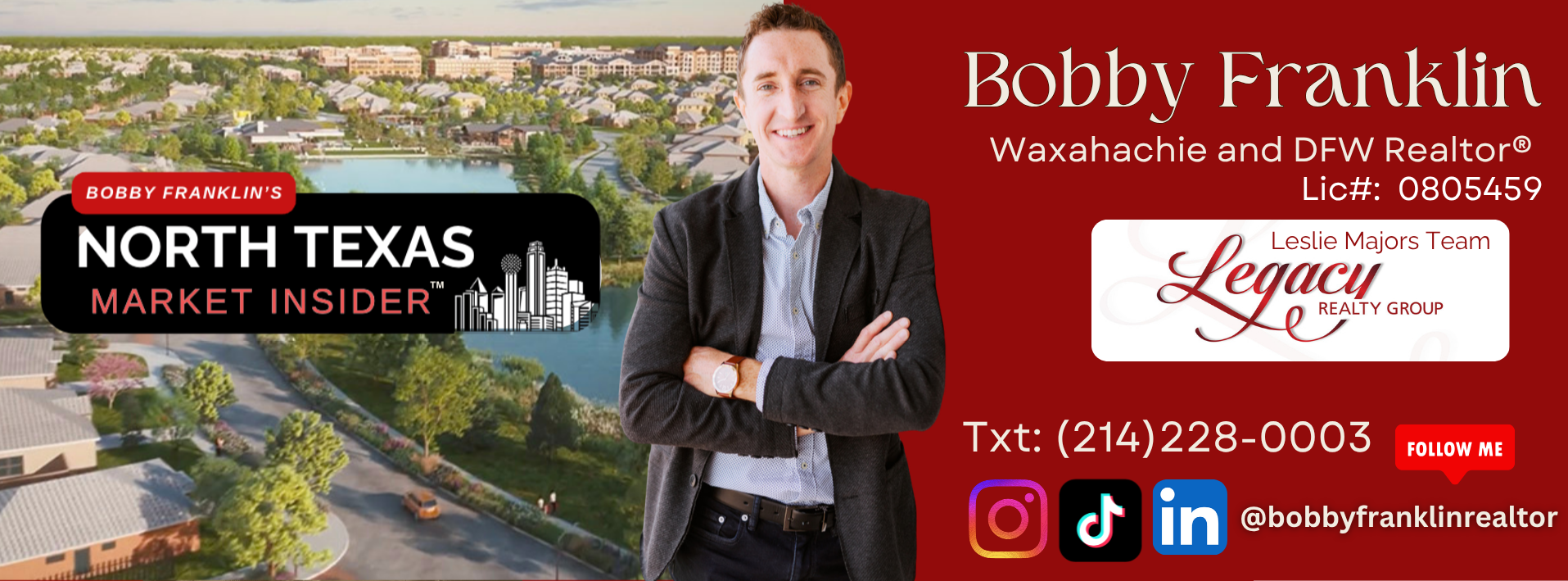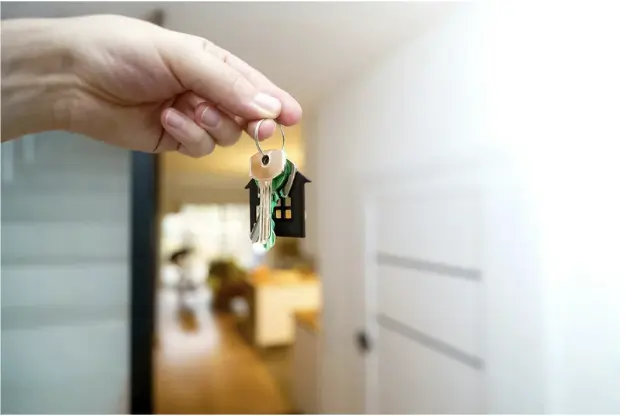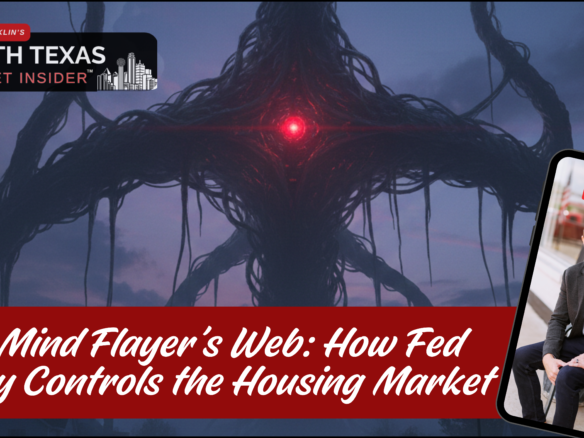The Conversation I Have Ten Times a Week
Buyer: “Bobby, I want to buy a house, but these rates are killing me. I’m paying $2,000/month in rent, and I feel like I’m throwing money away. But when I run the numbers on buying, the payment is $2,400/month. I can’t afford that.”
Me: “So you can’t afford an extra $400/month, but you CAN afford to pay $24,000/year in rent that builds zero equity, while watching the house you want appreciate $30,000-$40,000 over the next year?”
Buyer: Long pause “…I never thought about it that way.”
This is the conversation that changes everything.
Most buyers are asking the wrong question. They’re asking “How do I get a lower rate?” when they should be asking “How do I build wealth even with a higher rate?”
Let me show you exactly how to buy strategically in today’s market, even if rates stay at 6-7% for the next few years.
The Fundamental Mindset Shift
Before we get into tactics, you need to understand something critical:
Your first mortgage rate is not your forever rate.
Your purchase price IS your forever starting point.
Think about that for a second.
If you buy a house at $350,000 today, that’s your basis. That’s what you paid. When it appreciates to $400,000, you gained $50,000 in equity.
But your interest rate? That’s temporary. You can refinance in 1-2 years when rates improve. Your rate can change. Your purchase price cannot. (Refi vs Wait To Buy)
This changes EVERYTHING about how you approach buying in a high-rate environment.
Strategy 1: The Buy-Down Game Plan

Seller concessions are your secret weapon right now.
In today’s market, sellers are motivated. Inventory is up, buyer traffic is down, and properties are sitting longer. This gives YOU leverage.
How to Use Seller Concessions to Effectively Lower Your Rate
The Standard Approach (Most Agents Do This):
“Hey seller, can you pay $5,000 toward buyer’s closing costs?”
The Strategic Approach (What Winners Do):
“Hey seller, buyer requests 2% seller concession toward rate buy-down, which makes this property competitive with rentals in the area.”
Real Ellis County Example:
Purchase Price: $350,000
Seller Concession: 2% ($7,000)
Used to buy down rate from 6.5% to 5.75%
Payment impact:
- 6.5% payment: $2,212/month (P&I)
- 5.75% payment: $2,042/month (P&I)
- Monthly savings: $170
- Annual savings: $2,040
Now that $350,000 house suddenly costs the same per month as the $325,000 house without concessions.
You just made $25,000 appear out of thin air through strategic negotiation.
The Permanent vs. Temporary Buy-Down
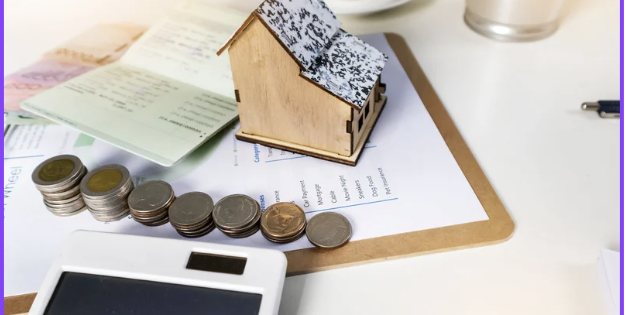
You have two options:
Option A: Permanent Buy-Down
- Pay points upfront to lower rate for entire loan life
- More expensive ($7,000 might buy you 0.75% reduction)
- Makes sense if you plan to keep the loan 5+ years
Option B: Temporary Buy-Down (2-1 or 1-0)
- Use seller concession to subsidize payments for first 1-2 years
- Lower upfront cost
- Makes sense if you plan to refinance within 2-3 years
My recommendation for Ellis County buyers: Use a permanent buy-down with seller concessions, then refinance in 18-24 months when rates drop. You get:
- Lower payment immediately
- Better cash flow to save for refinance costs
- More affordable qualification ratios
- The optionality to refinance later
This is how you beat the high-rate game.
Strategy 2: The Creative Financing Playbook
Most buyers only know about conventional 30-year fixed mortgages. That’s like only knowing how to play checkers when the game is actually chess.
Assumable Mortgages: The Hidden Gold Mine
If you find a seller who bought in 2020-2021, they might have a 3-4% mortgage that’s ASSUMABLE.
How it works:
- Seller has a $300,000 loan at 3.5%
- House is worth $375,000 now
- You pay seller $75,000 down payment
- You assume their $300,000 loan at 3.5%
You just got a 3.5% mortgage in a 6.5% world.
The catch: Only FHA, VA, and USDA loans are typically assumable. Conventional loans are not (usually).
Your action item: When shopping, specifically ask: “Is this loan assumable?” Most agents don’t even think to ask. You just gained a massive competitive advantage.
ARM Strategies (Don’t Panic)
ARMs (Adjustable Rate Mortgages) got a bad reputation in 2008, but they’re actually perfect for today’s environment.
The 7/1 ARM Strategy:
- Fixed rate for first 7 years (usually 0.5-1% lower than 30-year fixed)
- After 7 years, rate adjusts annually
- But here’s the key: You’re going to refinance in 2-3 years anyway when fixed rates drop
Real scenario:
- 30-year fixed: 6.5%
- 7/1 ARM: 5.75%
- Monthly savings: $170
- Over 24 months before refinance: $4,080 saved
You just saved enough money to pay for your refinance closing costs.
The 5/1 ARM Strategy:
- Even lower rate (sometimes 1-1.5% below fixed)
- Perfect if you’re confident you’ll refinance within 5 years
- Or if you might sell and upgrade within 5 years
Who should use ARMs:
- First-time buyers planning to upgrade in 5-7 years
- Anyone confident rates will drop in next 2-3 years
- Buyers who prioritize lower payment now over rate stability
Who should avoid ARMs:
- Buyers who never want to think about their mortgage again
- Anyone planning to stay in the home 10+ years without refinancing
- Risk-averse personalities who won’t sleep well with rate uncertainty
Seller Financing: The Ultimate Win-Win

This is the most underutilized strategy in real estate, especially with older sellers who own their homes outright.
How it works:
- Seller acts as the bank
- You make payments directly to them
- Usually at rates between traditional mortgages and hard money
- Can structure terms however you both agree
Ellis County scenario:
Property: $280,000 house, owned free and clear by retiring couple
Traditional financing: Would be 6.5% = $1,770/month (P&I)
Seller financing deal we structured: 5.5% interest-only for 5 years, then balloon payment or refinance
Payment: $1,283/month (interest only)
Buyer saves: $487/month for first 5 years
Why the seller agreed:
- They’re getting 5.5% return (better than CDs or bonds)
- Monthly income stream for retirement
- If buyer defaults, they get the house back (with improvements)
- Closed in 2 weeks instead of 45 days with traditional financing
Why the buyer won:
- $487/month savings = $29,220 over 5 years
- Time to save for larger refinance down payment
- Built equity through appreciation
- Avoided PMI and some closing costs
When to propose seller financing:
- Seller owns property outright (no existing mortgage)
- Seller doesn’t need all cash immediately (retiring, downsizing)
- Property has been on market 60+ days
- You have stable income but maybe lower credit score
How to structure it:
- 5-10% down payment
- 5.0-5.5% interest rate
- 5-7 year balloon (then you refinance)
- Interest-only for first 1-3 years (optional)
- Seller still gets security interest in property
Pro tip: Your attorney handles the paperwork. It’s simpler than most people think.(Seller Financing in TX)
Strategy 3: The Aggressive Down Payment Approach
This sounds counterintuitive in a high-rate environment, but hear me out Conventional wisdom: “Put down the minimum and invest the difference.”
High-rate reality: “Put down more to reduce your payment and eliminate PMI.”
The Math on Larger Down Payments
Scenario A: 5% Down on $350,000
- Down payment: $17,500
- Loan amount: $332,500
- Payment at 6.5%: $2,101/month (P&I)
- PMI: $277/month
- Total: $2,378/month
Scenario B: 20% Down on $350,000
- Down payment: $70,000
- Loan amount: $280,000
- Payment at 6.5%: $1,770/month (P&I)
- PMI: $0
- Total: $1,770/month
Monthly savings: $608
Annual savings: $7,296
But Bobby, I don’t have $70,000!
I know. But here’s where creative thinking comes in.
Sources for Larger Down Payments
1. Family Gift Programs
- Parents/grandparents can gift up to $18,000/person ($36,000/couple) per year tax-free
- Properly documented gifts are acceptable for mortgage qualification
- Frame it as: “We’ll pay you back when we refinance in 2 years” (though legally it must be a gift)
2. Down Payment Assistance Programs
- Texas State Affordable Housing Corporation (TSAHC)
- Chenoa Fund (3.5% down payment assistance)
- Community Seconds Program
- Many have NO income restrictions
Ellis County specific: Several first-time buyer programs I can connect you with that provide $10,000-$15,000 in down payment assistance.(Down Payment Assistance)
3. IRA/401(k) Withdrawal (Use Carefully)
- First-time buyers can withdraw up to $10,000 from IRA penalty-free
- 401(k) loans allow borrowing up to $50,000
- Must weigh against long-term retirement impact
My take: If you’re 30-40 years old and your 401(k) has $200,000+, borrowing $30,000 for a down payment that generates 8-12% annual returns through appreciation is often better than leaving it in the market. Run the numbers with a financial advisor.
4. The “Rent What You Own” Strategy
- If you own ANYTHING of value (second car, RV, boat, equipment), rent it out
- Drive for Uber/Lyft specifically to save for down payment
- Side hustle with single purpose: increase down payment
Real example: Buyer drove Uber Friday/Saturday nights for 8 months, earned $18,000, combined with $12,000 savings = $30,000 down payment. His rideshare earnings literally bought him a house.
The Counter-Argument: When to Keep Down Payment Low
There ARE scenarios where minimum down payment makes sense.
Keep it at 5% if:
- You have high-interest debt (credit cards, personal loans) to pay off instead
- You need liquidity for emergencies (less than 6 months expenses saved)
- You’re in a high-appreciation market where equity will eliminate PMI quickly
- Investment opportunities that return more than 6.5% after-tax
Ellis County perspective: Our market is appreciating 8-12% annually. If you put down 5% and the home appreciates 10% year one, you’ve built enough equity to eliminate PMI through a reappraisal. Sometimes minimum down makes sense.
Strategy 4: The Refinance-Ready Position
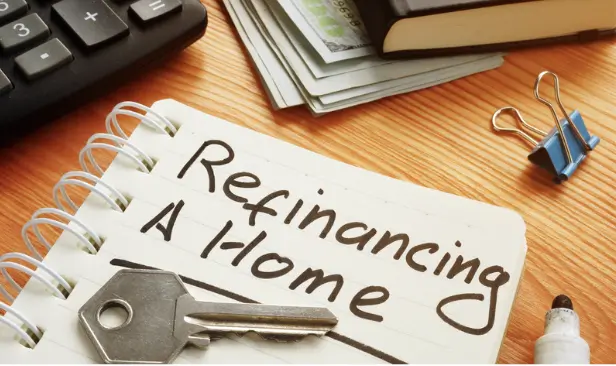
The smartest buyers right now aren’t just buying a house. They’re positioning themselves for a strategic refinance in 18-24 months.
How to Buy Today With Refinance in Mind
Step 1: Build Cushion Into Your Budget
Don’t max out your qualification.
Example:
- You qualify for $400,000
- Monthly payment would be $2,500
- Instead: Buy at $350,000
- Monthly payment: $2,212
- Save the $288 difference monthly
Why: In 18-24 months when you refinance, you’ll need:
- Appraisal: $500-700
- Closing costs: $2,000-4,000
- Possible cash-in if home hasn’t appreciated enough
That $288/month = $6,912 saved over 24 months. You just funded your refinance.
Step 2: Make Strategic Extra Payments
Every extra dollar toward principal accomplishes three things:
- Reduces total interest paid
- Builds equity faster for refinance
- Lowers your loan-to-value ratio
Aggressive strategy: Round up your payment. $2,212 becomes $2,500. That extra $288/month:
- Saves $47,000+ in interest over life of loan
- Pays off mortgage 5 years earlier
- Builds an extra $8,000-10,000 in equity in first 2 years
Moderate strategy: One extra payment per year (divide monthly payment by 12, add that to each payment):
- $2,212 ÷ 12 = $184
- New payment: $2,396
- Saves $28,000 in interest
- Pays off mortgage 3 years earlier
Conservative strategy: Add $100/month:
- Saves $17,000 in interest
- Pays off mortgage 2.5 years earlier
- Still meaningful impact
Step 3: Monitor Rate Trigger Points
Don’t obsessively check rates daily. Instead, set strategic triggers.
Refinance Alert Thresholds:
- 1% drop: Start getting quotes, run the numbers
- 1.25% drop: Definitely refinance unless closing costs are astronomical
- 1.5% drop: Refinance immediately, no question
Example: You bought at 6.5%. Set alerts for:
- 5.5% = start exploring
- 5.25% = definitely refinance
- 5.0% = drop everything and refi now
Step 4: Choose the Right Original Loan
Some loans are easier/cheaper to refinance than others.
Easy refinances:
- Conventional loans
- No prepayment penalties
- Standard documentation
Harder refinances:
- FHA loans (require FHA streamline or full refi)
- VA loans (similar issues)
- Non-QM loans (might have prepayment penalties)
Ask your lender upfront: “What will it take to refinance this loan in 2 years? Any prepayment penalties? Any restrictions?”
The Bottom Line

High interest rates are not a barrier to wealth building. They’re an OPPORTUNITY.
While 95% of buyers sit on the sidelines waiting for perfect conditions, you can:
✅ Buy at lower prices due to reduced competition
✅ Negotiate substantial seller concessions
✅ Lock in appreciating assets before demand surges
✅ Position yourself to refinance when rates drop
✅ Build equity while renters keep waiting
The truth nobody wants to hear: In 3-5 years, buyers will look back at 2024-2025 and say “I wish I had bought when rates were 6.5% and prices were reasonable.”
Just like they say now about 2020: “I should have bought when rates were 3%, even though I thought prices were too high.”
The pattern repeats because human psychology doesn’t change.
Don’t be another person with regrets. Be the person with $250,000+ in equity 5 years from now.
Your Next Move
Want to talk through which of these strategies makes sense for YOUR specific situation?
Let’s build your personalized high-rate buying strategy:
- Calculate your exact numbers
- Identify the best Ellis County neighborhoods for appreciation
- Structure an offer that includes strategic seller concessions
- Position you for a strategic refinance in 18-24 months
While other agents are telling clients to wait, I’m helping buyers build wealth RIGHT NOW.
Which strategy resonates most with you? Let’s make it happen.
🏡 Tracking DFW developments so you don’t have to
📲 Text 214-228-0003 for weekly insights
Bobby Franklin – REALTOR®
Legacy Realty Group – Leslie Majors Team
Serving Ellis County & DFW
